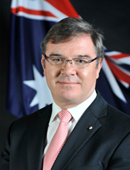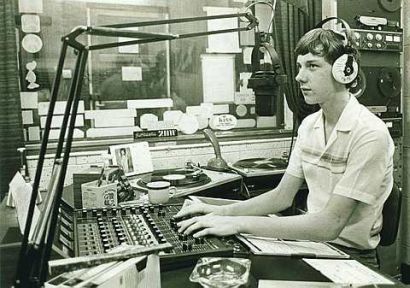|
Radschool Association Magazine - Vol 40 Page 19 |
|
Privacy Policy | Editorial Policy | Profit Policy | Join the Association | List of Members | Contact us | Index | Links |
|
Your Say!
|
|
Back Go to page: 1 2 3 4 5 6 7 8 9 10 11 12 13 14 15 16 17 18 19 20 Forward |
|
Denise Lawson.
Hello to everyone, I thought it was time for a quick hello and maybe some of you are busy working BUT I’m not - just sitting back in this glorious weather we are experiencing up here in Townsville at the moment. Days like this you quickly forget to horrible heat of Summer. Ha! I hope this finds you all well and happy and finally settled after that wonderful trip we all shared. I had my home painted while I was in Canada so it was great to come home to a lovely fresh house, and now I am busy getting into my garden and doing some other minor tasks around the place.
Janine Jeansch
Gary Broughton writes, “in reference to Janine Jeansch mentioned in the mag (Vol 39 p 19), her first posting out of Radschool was to 1AD Telecommunications Installation and Maintenance Squadron (TIMS) TELEG Flight. TIMS was also known as Skippy Squadron. I did not know Janine at all well, but I remember the preparations we in Radio Flight, (which was right next door to TELEG flight), had to make pending her arrival.
As you can imagine, an all-male workshop like these two flights was really, really blokey. I mean the combined strength of ORs was more than 20. There were inappropriate pictures on walls, language, all sorts of things that we would not be expected to impose on a female.
|
|
|
|
I had been at Radio Flight out of Radschool for about a year or two before we got word that Janine was posted in. Although she was joining the secret squirrels next door, there was a large connecting door between the workshops, so both had to clean up their act.
Jimmy Mullins was the Radio WOFF at the time, Matt Howden the FSGT and Colin Wayne Goodwin my SGT. They had to embark on an education and clean-up program that was probably as much targeted at themselves as the rest of us. Freddy Chilco was the WOFF occupying the front office, but he was always the consummate gentleman and never seemed to be phased by anything.
After Janine arrived, we were all used to the "new way" and it did not seem like such a big deal. I was transferred to another flight (CMRTF) shortly thereafter to work on SURAD and really heard very little more about her until the speculation started in our mag.
|
|
A sign on Washington's Route 8, features an illustration of a "If you drink and drive, we'll provide the chasers."
|
|
SURAD Radar.
Last issue Owen Veal wanted some info on the SURAD radar system, seems a lot of people worked on that bit of gear as we got lots of replies, here’s a few:
Terry Haebich (ex 22 Appy). Surad (Surveillance RADAR) - was used for airfield ATC as it only had a 100Km range. I was on the original team that went to France to train on the Surad system. I worked mainly on the SDGS (cannot remember what the acronym stood for at the moment) and the SSR digital equipment both on maintenance and training.
And
Gary Broughton says, “With reference to Page 19 of Vol 39 "SURRAD Antenna", as a RADTECHG I worked on the SURAD installation in Darwin between Jan 1980 and Feb 1983.
Before that, I worked at 1AD's Centralised Maintenance and RADAR Training Facility (CMRFT) initially in maintenance of SURAD and then as an instructor on this equipment, specifically the "head" (the angry end). I recall sitting on the feed horn doing maintenance on this gear in Darwin 90' above the ground.
There are actually two
reflectors associated with this gear, primary and secondary. At an
operating frequency of around 1.3 GHz (L band), the primary
reflector had a horizontal beam at around 1.2 degrees at the 3 db
points. The shape of the reflector was referred to as a "modified
cosecant squared". The bottom of the reflector was deformed upward
to reflect some radiated power upward giving a vertical beam height
of something
The primary transmitter used frequency diversity with two transmitters feeding the duplexer through a high power diplexer. The sole purpose of this was to eliminate blind speed. The Moving Target Indicator (MTI) system detected any phase change imposed on a reflected signal (a different way of looking at the Doppler Effect) with respect to the incident signal to determine whether or not a target was moving. At certain target speeds, the phase change is one or more multiples of 180 degrees, so the MTI eliminates the target as not moving. This is radiated frequency dependent, so having two transmitters running at different frequencies means that the two MTIs have different blind speeds, so every moving target will always be seen by one or other system.
Having two primary systems side by side meant that we could have one down for routine maintenance while the other kept humming away. L band was chosen as it is less prone to weather effects. There were occasions though, given suitable weather conditions in Darwin, when the second time around reflections would show us aircraft at more than double the operational range of the RADAR.
The secondary RADAR reflector was essentially just a wide strip box radiating element sitting on top of the primary and did the usual secondary RADAR stuff, sending out interrogation pulses and receiving active responses. The secondary RADAR head equipment was reasonably uncomplicated compared to the primary and rarely gave us any maintenance issues.
The whole kit was fed by waveguide and cabling from the head in a building at the base of the tower. It sat at the top of the tower on a turntable that could rotate the whole lot at either 7.5 or 15 rpm, although it was only ever used at 15 rpm in Australia. The secondary waveguide passed through the primary waveguide at a rotating junction in the centre of the base of the turntable.
There was an enclosed room at the top of the tower below the turntable that housed the drive motor, locks and some switch gear. It had double sliding doors with a gantry that was used to lift heavy gear up and down. The stairs were not appropriate for moving equipment.
The last time I looked, the head building still sits on the base at Darwin near the new domestic terminal (which is sited on our pistol range, damn them all), but the tower is long gone.
The RADAR video information was sent across the airfield by cable to Area Approach Control for processing by the display equipment into a raster, TV style picture for presentation to the controllers (an air traffic controller with a screw driver in his pocket was a man to be feared).
SURAD was not a defence RADAR, its purpose was strictly air traffic control surveillance and variations of it can be seen at any of the major domestic airports. It superimposed maps and secondary RADAR data (such as aircraft designation, the colour of the pilot's socks etc) onto the Plan Position Indicator (PPI) representation provided from the primary RADAR.
There was a clear demarcation between the "head" and "display" technicians. We head technicians were regarded by the display techs in much the same fashion as one might regard a monkey. We regarded the display guys as the "glamour boys". However, we had our own world as the only people ever seen at the head were the head technicians, while absolutely anybody could walk around the display area, even air traffic controllers and head technicians. They were all good guys though. Phillip Baldock and Terry Haebich were display techs at 1AD and I hold them in very high regard.
I was on duty at the head on the night cyclone Max passed over Darwin (March 1982 I think) and was watching the PPI display for the eye of the cyclone until the wind got to the maximum load for a rotating reflector of that size. Then I shut it down until the cyclone had passed. My family (wife and three kids) was sheltering in the control tower on the other side of the airfield. There was an almighty bang when I tried to power it all up in the morning. Despite the fact that we had steel covers over the external vents from the cooling gear, water got in to the 3 phase fan motor. I thought the world had ended. A motor changeover soon had it going again though.
It was pretty good technology for the time although it was designed in the 60's. The display computer was made from discrete components (nothing like a fully integrated CPU we see today) and had an 8k ferrite bead memory core that was made by hand somewhere in South America and was worth (or cost) a couple of hundred thousand dollars. The video conversion (PPI to raster) used a very expensive device that looked like two 4" CRT tube stuck face to face. I think it had a very early CCD membrane in the centre. One end projected the PPI display onto the membrane while the other essentially used the membrane as the active component of a TV camera providing a rasterised version of the image.
At the head we only had a standard orange phosphor PPI display, although this was quite large and provided a pretty good view on the data we sent to the display end. There was a similar PPI display at the display end too.
I think the SURAD designation was AF/FPN-802. I should remember that because I ended up working at the publication sponsor for it in TELENG at HQ Support Command a few years later. Unfortunately, even that was quite a while ago now (1985).
The SURAD was built by the French company Thompson-CSF (now the Thales Group) and purchased by Australia at a time when the French were out of favour with the Australian public due to nuclear testing in the Pacific. When the first reflector arrived in Australia for delivery to 1AD, the wharfies observed the French markings and deliberately dropped it. The "modified cosecant squared" shape was not so (it was a mess when I saw it) and had to be repaired by 1AD's Ground Equipment Maintenance Squadron (GEMS). Those guys were magicians. Alas, they are no more. The only people affected by the wharfies less than informed action were the Australian tax payers.
I have no idea what happened to the CMRTF installation at Laverton. I've not been down that way for many years.”
(Sambo - We’ll be asking questions later – tb)
And
Trevor Wilkinson. Re the Surad antenna, I was on the second course that went to Paris for training on the SURAD Thomson CSF radar in 1974/75. There were two courses, one for the Radar Head and one for the display. I was on the display course. The Surad antenna was a dual primary and secondary radar antenna array, driven by a 2.2MW L band dual diversity primary transmitter with high and low coverage. The secondary antenna system mounted on top of the primary antenna comprised of a switchable omni and directional antenna for sidelobe suppression-how's that for memory! (Pity about the short term stuff).
The history of radar usage is a long and twisting one. The raw science behind radar was discovered all the way back in the 19th century by Heinrich Hertz. Although he demonstrated in his lab that radio waves could be reflected off solid objects, he didn’t continue with the research in a meaningful way. Later, in 1895, Alexander Popov developed a radar-based device that was used to detect lighting strikes–it was the first time radar was put into application detecting things at a distance.
The relative non-pursuit of radar for civilian and military application would continue for nearly half a century. In 1917, Nikola Tesla outlined research on how radar could be used to detect ships and their speed. In 1922, A. Hoyt Taylor pitched the idea of a 60 MHz radar system to the Navy arguing that it would be excellent for detecting ships in foggy and poor weather conditions. The Navy remained uninterested until, years later, they wanted to apply the technology to tracking aircraft.
Around the world research on radar continued in a fragmented and halting fashion until the 1930s when research by Robert M. Page, at the Naval Research Laboratory, demonstrated the first modern pulse-based radar system. By the time World War II was underway, most of the world’s super powers like the United States, Britain, France, and the Soviet Union had independently developed radar-based defence systems.
While modern systems keep civilian air planes safe and detect enemy vessels at sea, they all can trace their family tree back to the designs of a Russian scientist that really just wanted those pesky merchant ships to get out of the way so he could go back to tracking storm heads and lighting strikes.
Jim Lander.
Jim writes, re the Black Goonie mentioned in Vol39, I was in Butterworth at this time and vaguely remember that Goonie, it was the cleanest Goonie I ever saw, not a drop of oil leaked out. It was rumoured to belong to the CIA run Air America, or did it not happen and I had another dream.
|
|
A man was riding a bus, minding his own business, when the gorgeous woman next to him started to breastfeed her baby. The baby wouldn't take it, so she told the child,
"Come
on, eat it all up or...or... I'll have to give it to this nice
man here." "Come on, kid. Make up your mind! I was s'posed to get off four stops back!"
|
|
The Continuing DFRDB discrace
Graham Crawford
Hi everyone, I've just got my DFRDB pension info for the next six months. I got a 75 cent increase in the pay, but my tax went from $63 to $93!! That means I have had $30 cut out of the pension. Anybody else get this sort of surprise, or have the powers-that-be slipped up with just mine? I'd hate to be in the defence minister's shoes if this is across the board, and if it's because of Julia's carbon tax, she mightn't win the next election!! At least I'm working full-time, so the impact is rather small, but what about the pensioners who aren't working? That's quite a wallop, on a monthly basis - $60. I've already sent an email to pensions@dfrdb.gov.au, asking for an explanation, so if I'm not the only one, someone's getting a very large in-box tomorrow.
And
Karl Cameron-Jackson.
(TPI veteran of Malaya 1963-4, South Vietnam 1964, 1966-67).
Today in the mail I received notification that "the Australian Bureau of Statistics (ABS) has recently announced an upward movement in the Consumer Price Index (CPI) over the past six month period from September 2011 to March 2012.
As a result your DFRB pension will increase by 0.1% on 12 July 2012. I have written to many Federal Ministers on this and other unrelated topics and I wonder what currently serving men and women think about this kind of "UPWARD MOVEMENT" when they put their lives on the line in AFGHANISTAN - TIMOR - and in other war zones to which they have been sent.
I retired from the Royal Australian Infantry as a General Staff Officer in 1972, following two major heart attacks. Since that time I have had surgery for two triple bypass operations, 1984 and 1992 and a STENT, 2001. I have recorded nine heart attacks and three spinal fractures. ALL are recorded as war related injuries. Most Ministers have heard of Lt Col John Graham who died two years ago. Almost to his last breath he fought to get some rationale into the DFRBF etc. on our behalf. He and Rob Haas got a petition together on the DFRBF subject listing almost 5,000 names almost 3 years ago ... to NO effect. Retired Generals have also "joined the ranks". Recently Industrialists and Executives have joined voice on our behalf with Ms Rinehardt and others. There are a rising number of Ministers and Senators who are starting to realize the anger and resentment "in the ranks" among both serving and retired personnel. Rarely do I receive an answer from Fed Ministers/Senators on this topic. When I do it is a scripted letter or email with little or no "reasonable" investigation of the facts. Many actually voted DOWN a "reasonable raise" last year.
To align our request (SERVICEMEN WHO HAVE BEEN SERIOUSLY INJURED ON WAR SERVICE) including other recipients of Military Super/DFRBF etc with the AGED PENSION (who get theirs by attrition, NOT by effort) is an insult. Military Service men and women in ALL arms and services deserve specific consideration for the exceptional risks they take. Yet political promises made have NOT been kept. More often broken.
But some raise, e.g. parallel to AGED PENSION, is better than the pittance vide the last CPI "UPWARD MOVEMENT"
And
The following letter was recently sent to Gary Gray, member for Brand in WA.
Dear Mr Gray,
As my local member of parliament I would like to draw your attention
to the windfall that we DFRDB recipients received today. Mine was an
increase in payment of $0.78 per fortnight. In my network the
examples are similar.
I recall your conversation with Air Vice Marshall Peter Criss on Howard Sattler's afternoon programme on radio 6PR earlier this year. The essence of your message was the the DFRDB system was a great system. I have had reports that your Foreign Affairs minister also spoke eloquently about the system recently.
Perhaps you could explain to my wife (who does the shopping) how $0.78 per fortnight covers the cost of living over the last six months. Oh! That's right. It’s not supposed to do that.
Well then perhaps you could explain to the 27 Bcc addressees on this e-mail (and to the thousands of others when it goes feral - as the saying goes) what this pittance is supposed to do for our income? At the same time perhaps you could explain to us what measures your government has in place to provide the DFRDB/MSBS with a buffer against the carbon tax when it is introduced shortly?
Perhaps you could spare some cash from your more substantial increase in the last few months.
We will not forget.
And
Adrian Heinrich recently wrote to Victorian Senator Michael Ronaldson and got an (undated) reply – you can read it HERE. |
|
Two old ducks were discussing their husbands over lunch. One said: "I do wish that my John would stop biting his nails. He makes me terribly nervous."
My Fred used to do the same thing," the other woman replied.
"But I broke him of the habit."
|
|
Ken Corkill wrote: Hi Guys and Galls, just wondering if any of your DFRDB pension increase advices showed an increase in your withholding tax? Mine showed an increase of $32 per fortnight which seems to defy the government’s claim that taxes were coming down this year.
A check of the ATO tax tables seems to indicate that for me this should have been a fall of $40.00 per fortnight.
I have contacted the DFRDB site and they directed me to the tax tables which certainly showed there should have been a decrease. I have sent my figures back to them using the ATO figures and am awaiting a reply.
Will keep you informed.
James Potter wrote, HI guys can we help this ex pongo out? Anyone have any Idea what Australian Operation Service is all about? Just for your information it is still raining here in Scotland I blame bloody Ron Clayton ex Rad Tech over here playing in the Squash Masters. He goes home in about a week or so bet the rain goes with him.
(Scotty, re Aust Operation Service - see HERE. tb)
Ian Muldoon wrote, Would anyone have a photo(s) of Radio RAAF Butterworth circa 1960s external shot, but particularly an internal shot of the studio. I was an announcer in 1968 and did the Jazz Programme.
(Ian, There’s info HERE and if you can help Ian with other photos, please contact him HERE)
The pic at right is of Mark Wilmott, 15, who was the voice behind Radio Butterworth's Countdown Top 40 which aired every Sunday.
|
|
A senior citizen goes to his doctor and says, "Doctor, I have sex only once a week. "The doctor asks, "How old are you ?"The patient replies "Seventy-five. "Wait now. You're 75 and have sex once a week. I think that's wonderful. What are you complaining about ?" "My neighbour is almost eighty years old, and he says he has sex three times a week, every week. "The doctor smiled and said, "I can easily solve your problem. From now on, you say the same thing
|
|
Back Go to page: 1 2 3 4 5 6 7 8 9 10 11 12 13 14 15 16 17 18 19 20 Forward |
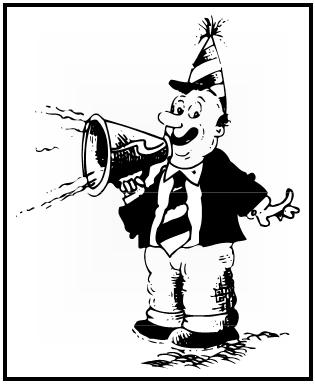
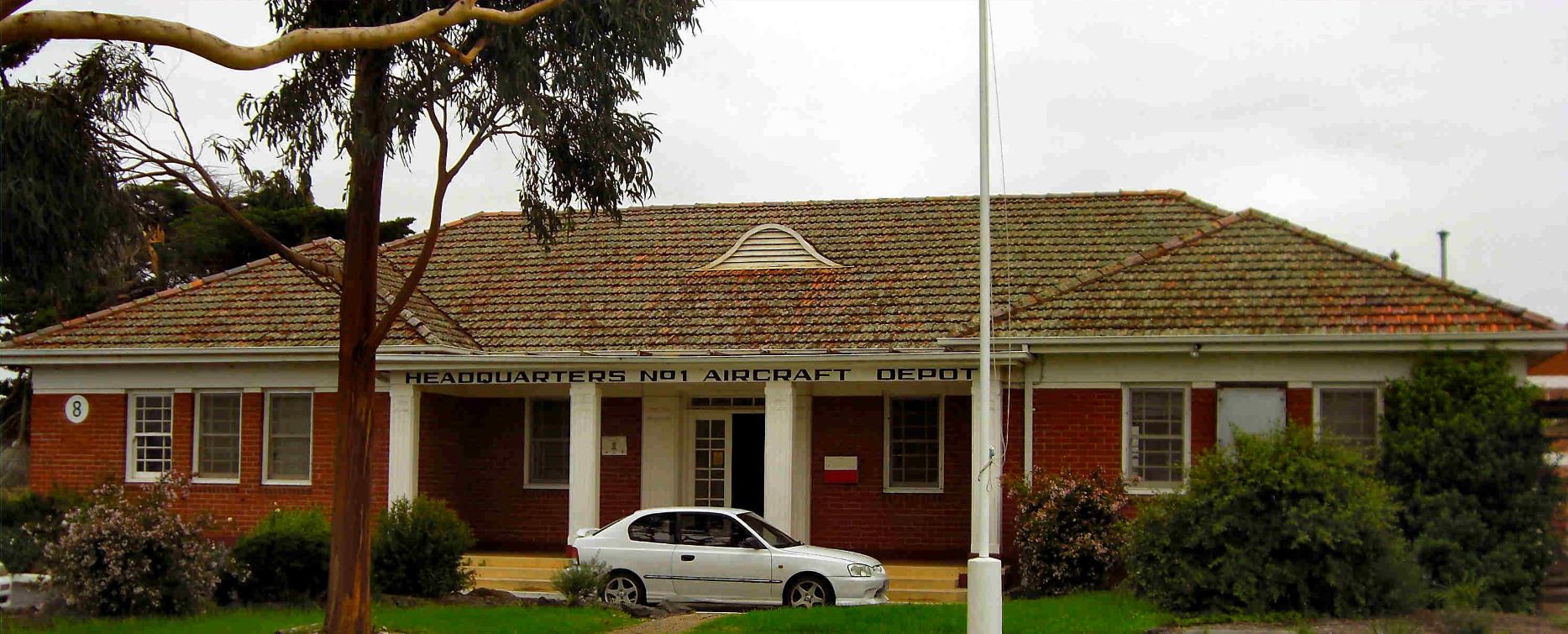
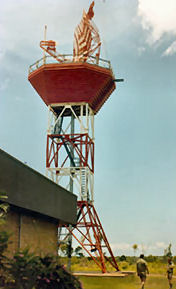


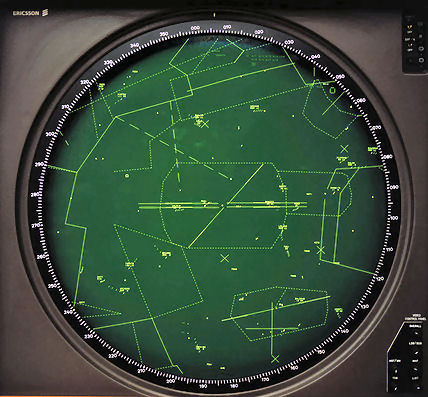
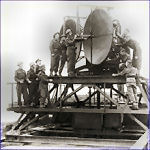 Popov
was also the first to observe that you could use radar to detect
ships out at sea when he noticed he could detect ships passing
between his apparatus and the distant lighting strikes he was
recording. While he wrote of how his lighting strike detector could
be used for detecting ships and such, he didn’t pursue the topic
either.
Popov
was also the first to observe that you could use radar to detect
ships out at sea when he noticed he could detect ships passing
between his apparatus and the distant lighting strikes he was
recording. While he wrote of how his lighting strike detector could
be used for detecting ships and such, he didn’t pursue the topic
either. 
